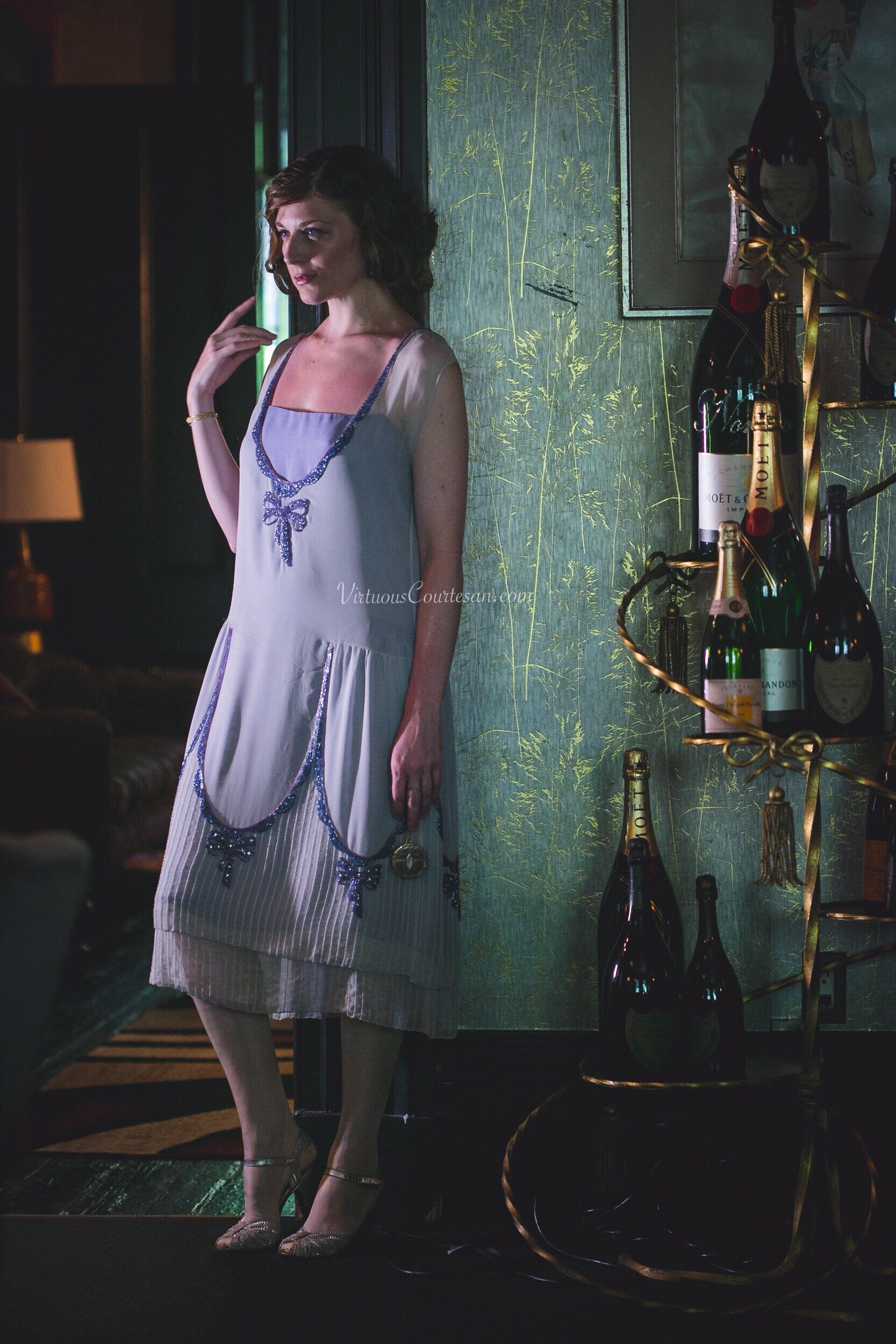1920s Hand Beaded bow dress.
Style
It is impossible to think of the 1920s without picturing the ubiquitous beaded gowns of the period. As machine made lace started to dominate the market- lace makers turned their skills with a tambour hook to beading instead of lace making. Tens, if not hundreds, of thousands of French women worked incredible hours to produce the dresses we now think of for this era. The dresses are incredibly ephemeral- heavy glass on the sheerest of silks does not hold up well to the test of time. {As an aside - I actually think this is a heartbreaking but lovely thing}
Tambour beading has been one of those mysteries that seemed insurmountable to me . I had heard horrors of how difficult it is (its not) and how time consuming it is to learn (what worth learning isn’t!) In September of 2017 I took the plunge and signed up for “Introduction to Tambour Beading” class offered by Robert Haven. It was incredible. Three days- nearly 7 hours each- focused on simply learning a new skill. I cannot remember when the last time I sat down to really just put all of my energy into learning something. Mr Haven was a patient teacher who clearly is a master of his craft. The class, of course, can only teach you the technique - it cannot make you proficient. Only practice can do that. And so- immediately upon returning- I decided to start with a not-so-small beaded 20s dress.
Construction
The dress itself- and its underlying slip is 100% sewn by hand, french seamed and rolled hemmed. The beads on the dress are a combination of modern, vintage and antique. My favorite of which- the milk glass ones in the vertical rows- were an incredible Flea Market find by a dear friend. I treasure them. The slip is comprised of a layer of china silk over a layer of crepe de chine. The periwinkle china silk adds an unexpected pop of subtle color. The hem of the slip is made up of 4 inches of vertical rows of beads. This gives the dress more length as well as a layered look. Dresses of the period are not as short as we envision them and tend to loiter around lower to mid calf. The slip has silk straps.
The front and back of the dress are hand beaded in my own swagged design. The bow itself is based on a piece of antique jewelry I saw and loved (source unknown). The pattern of the dress is a simple gathered waist shape. One could easily replicate this with any of the “One hour dress” instructions from the period. In true form - the dress did not take me one hour and instead took me about 6 months. The majority of the time was spent beading.
Accessories
For the images I am wearing (previously damaged) antique silk stockings and shoes likely from the 1930s. I generally dont suggest wearing antique stockings as the silk is almost guaranteed to fail with much movement.
Photos by Phillip VanNostrand
Shot at the Norwood Club in Manhattan.


















